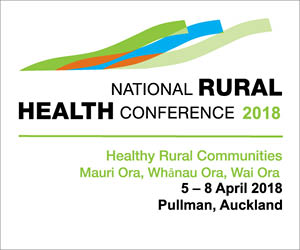The increase in ‘nurse sensitive’ indicators like pressure injuries and hospital acquired infections in the annual adverse events report released today were ‘concerning’, says the New Zealand Nurses Organisation.
Increased reporting of patients suffering delayed diagnosis and pressure injuries were largely behind an increase in public hospital adverse events, shows the the 2016-17 Learning from adverse events report released today by the Health Quality and Safety Commission. But the number of falls leading to injuries continues to decrease.
Jane McGeorge, the NZNO’s nursing and professional services manager said it was pleased to see the small decrease in patient falls. But it was concerned about the number of reports of nurse sensitive indicators like the failure to respond to deteriorating patients and the increase in reports of other indicators like pressure injuries and hospital acquired infections.
The Commission report records the health care adverse events reported to them by district health boards (DHBs) and other health care providers.
A total of 542 non-mental health* adverse events were reported by DHBs in 2016–17 up from 520 in 2015–16, 525 in 2014-15 and 454 in 2013-14. Of the 542 adverse events reported by DHBs, 79 people died however the Commission said the deaths were not necessarily directly related to the adverse event. (*Mental health and behaviour-related adverse events are now reported via the Office of the Director of Mental Health annual report).
Commission chair Professor Alan Merry said the adverse events report reflects a steady improvement in reporting culture towards increased transparency and taking action based on learnings from system failings. The Commission also believed that at present New Zealand’s adverse event levels were “broadly comparable” to Australia and the United Kingdom.
Merry believed the steep upswing in reported pressure injuries – from about 15 last year to 51 this year – might reflect a “concerted effort across the sector to raise awareness of the impact and devastating harm of those injuries”. “This attention is particularly important given evidence shows pressure injuries are highly preventable.”
He also believed the increase in healthcare associated infections (HAIs) – up from three last year to 16 this year – was due to the Commission highlighting the issue leading to additional reporting.
“This may reflect both an improvement in reporting culture and awareness-raising through the work the Commission and sector are doing as part of the Surgical Site Infection Improvement programme.”
The adverse event statistics also showed for the second year running an increase in clinical management events and a decrease in falls adverse events
The largest sub-group of clinical management events is delayed diagnosis or treatment – including delays in referrals and follow-up by specialty services – with 70 reports. Thirty of those reports related to cancer or suspected cancer with the majority of DHBs having reports in these areas. There were also 24 events relating to ophthalmology from a number of DHBs. In the separate reporting area of failing to recognise, rescue or manage deteriorating patients there were 26 events reported.
MacGeorge said NZNO believed indicators like pressure injuries, deteriorating patients and HAIs needed to be monitored specifically, “not as part of a homogenous group as they are barometer of quality of care and typically observed in an under-resourced system”. She said NZNO was working to have the safe staffing Care Capacity Demand Management system operating in all DHBs to ensure hospitals were safe for patients and staff.
“The underfunding of the health service has led to understaffed hospitals and lean resources but with a new government promising reinvestment we expect the situation for patients and health staff to improve,” Jane MacGeorge said.
Harm from falls still make up the majority of adverse events reported by DHBs – making up 39 per cent of all adverse events reported – but the number has fallen to 210 after peaking at around 275 in 2014-15. “The Commission recognises the tremendous effort across the sector in achieving an ongoing improvement in falls figures; reducing harm from falls is not easy to achieve and sustain as there is no single solution,” said the report.
2016-2017 DHB Adverse Event Reports:
- 282 clinical management events (including 70 for delayed diagnosis or treatment and 51 for pressure injuries)
- 210 falls resulting in serious harm, including 77 where the patient broke their hip
- 19 medication-related events
- 16 healthcare associated infections
- 15 other events (such as dietary management and documentation).
Other providers reported 86 adverse events in 2016–17:
- New Zealand Private Surgical Hospitals Association: 52
- ambulance services: 28
- aged residential care: one report relating to pressure injuryprimary health organisations: one event, relating to serious harm from a fall
- hospice: two events; one pressure injury and one serious harm from a fall
- community service: two events.
Merry said adverse events in health care can have a huge impact on the person involved and their whānau, family and friends.
“I would like to acknowledge the people affected by the tragic events outlined in this report. Partnering with consumers and whānau in the review and learning process is pivotal to improving quality and safety.”
Prof Merry says research shows consumers who have been affected by an adverse event offer a unique perspective on that event. “Consumers may be able to perceive care transition and process issues, including service quality, that occur before, during and after adverse events, that are less likely to be identified by providers”.
MacGeorge said NZNO thanked the Commission for their work to produce recent and relevant data and said the changes to the national adverse events reporting policy – which came into effect on July 1 this year – were also progressing well. She congratulated the Commission on the increased focus on outcomes of serious events for the consumer, increased engagement with whānau and extending coverage to the whole health and disability sector.
“We appreciate the culture of learning that allows us to find meaningful ways to improve patient safety while identifying workforce and, resource and system issues that are a barrier to safe care and safe staffing,” she said.
A copy of the full adverse events report is available online at https://www.hqsc.govt.nz/our-programmes/adverse-events/publications-and-resources/publication/3111/
HQSC “Q & A” on Adverse Events
What is an adverse event?
An adverse event is an incident that results in harm to people using health and disability services. Adverse events resulting in serious harm or death are reported by health and disability providers, guided by the Commission’s National Reportable Events Policy.[1] The policy was updated on 1 July 2017, but adverse events discussed in this year’s report are based on the 2012 policy.
Are providers required to report?
DHBs are required to report adverse events to the Commission in accordance with the policy guidance. Many non-DHB health providers – such as private surgical hospitals, aged residential care facilities, disability services and hospices – voluntarily provide information.
How accurate is the adverse events data?
The 2016–17 report explains the process for adverse events reporting to provide clarity and context to the numbers reported. The Commission believes that in some categories the number of reported adverse events is an increasingly accurate picture of the actual number of adverse events that occur. The number of broken hips in hospital reported by DHBs in this report, for instance, closely aligns with numbers included in the NMDS (National Minimum Dataset), which records information produced by public hospitals when a patient is discharged.
The adverse events reported increasingly reflect the evolving maturity of organisations to include broader types of events and to recognise the systemic influences contributing to their occurrence.






















